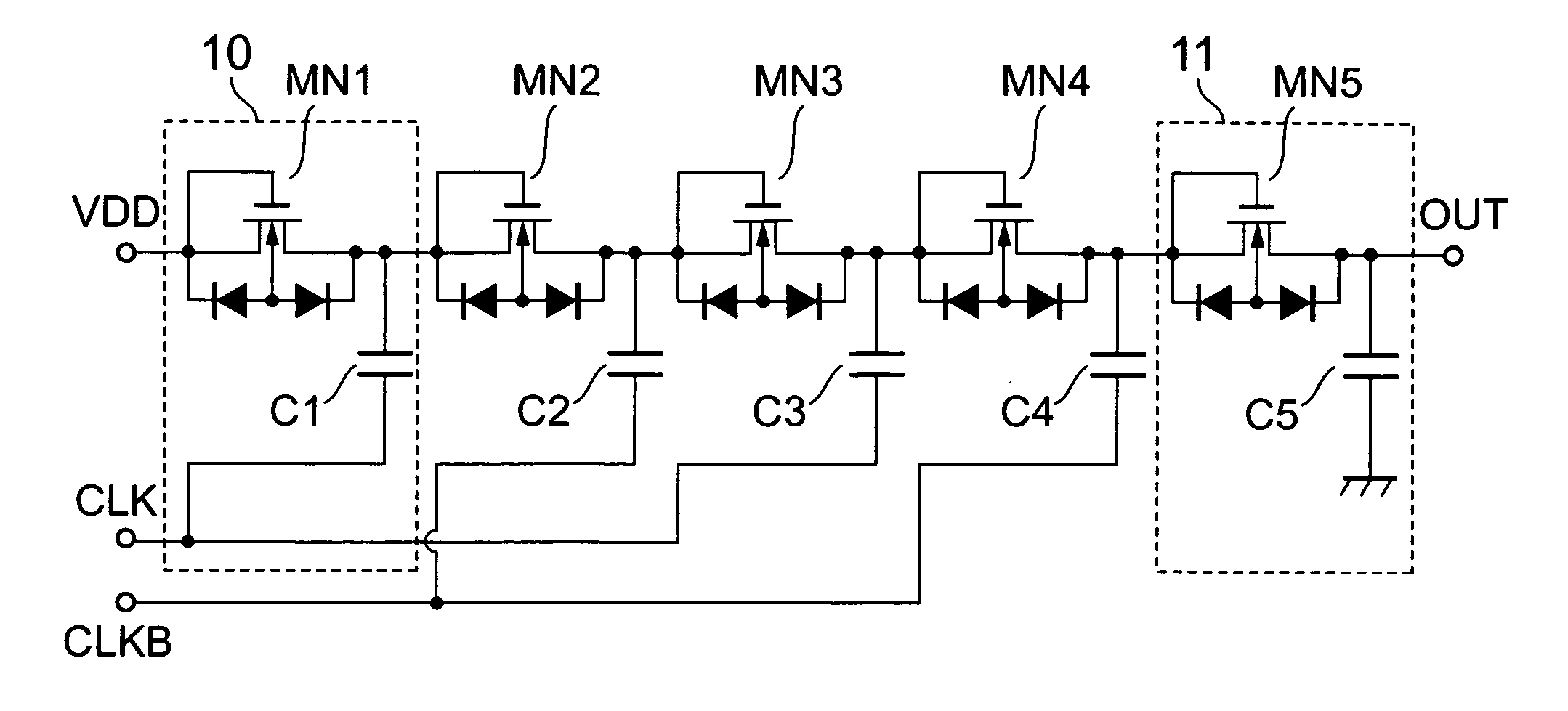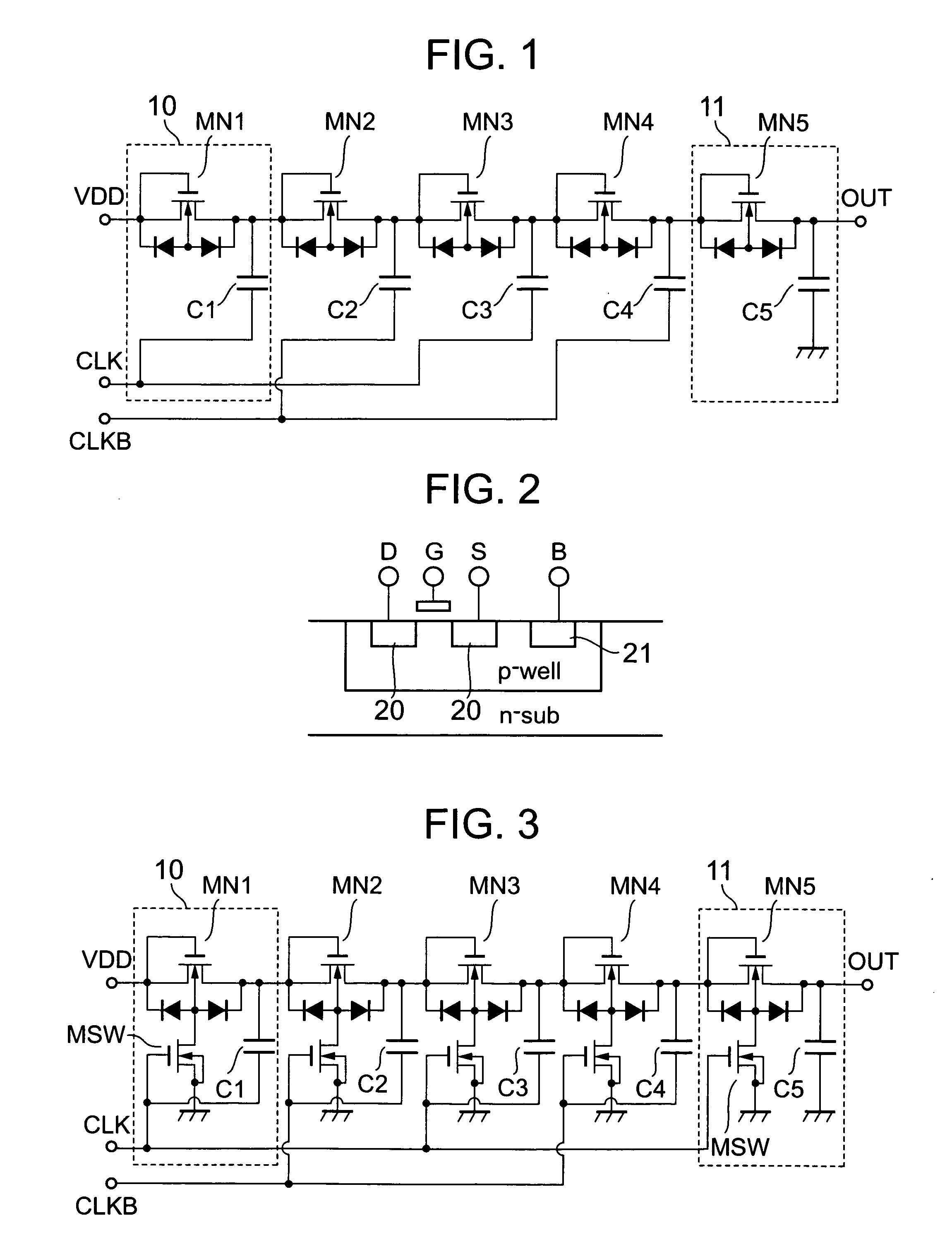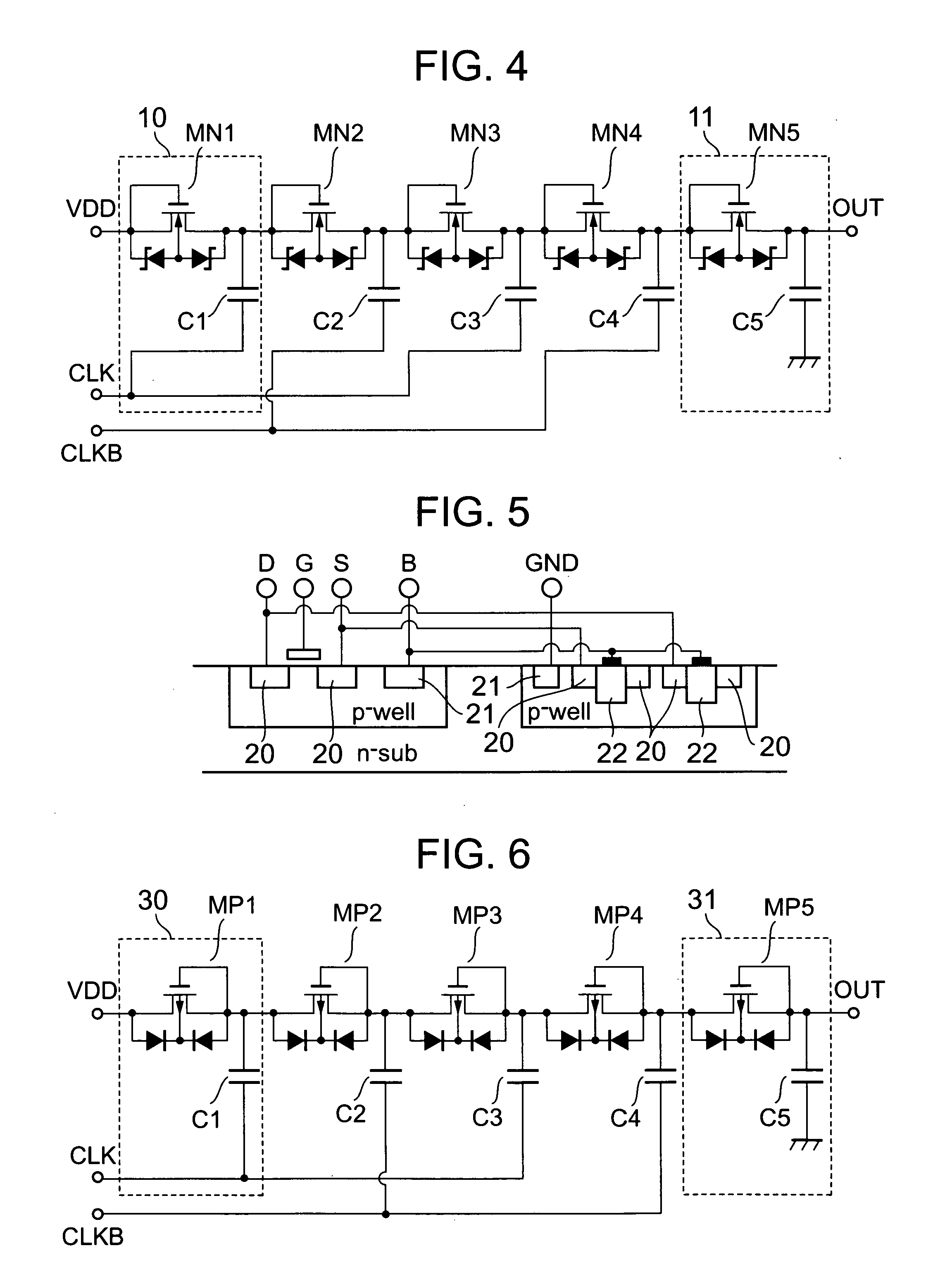Charge pump circuit
- Summary
- Abstract
- Description
- Claims
- Application Information
AI Technical Summary
Benefits of technology
Problems solved by technology
Method used
Image
Examples
embodiment 1
[0036] Referring now to the drawings, the embodiments of the present invention will be described herein below. FIG. 1 shows a boosting charge bump circuit according to a first embodiment of the present invention.
[0037] The respective voltages applied to the n-channel MOS transistors MN1 to MN5, the capacitors C1 to C5, the VDD terminal, the CLK terminal, and the CLKB terminal are equal to those applied in the conventional embodiment. The difference between the embodiments of the present invention and conventional embodiments is that the well potentials of the MOS transistors MN1 to MN5 are given by parasitic diodes. The parasitic diodes exist between the respective wells of the n-channel MOS transistors MN1 to MN5 and the respective sources and drains thereof. Specifically, a unit boosting circuit 10 is composed of an n-channel MOS transistor using the gate and drain thereof connected to each other as an input terminal and using the source thereof as an output terminal, and parasit...
embodiment 2
[0048]FIG. 3 shows a second embodiment of the boosting charge pump circuit according to the present invention. The voltages applied respectively to the n-channel MOS transistors MN1 to MN5, the capacitors C1 to C5, the VDD terminal, the CLK terminal, and the CLKB terminal are equal to those applied in the conventional embodiment. The difference between the embodiments of the present invention and conventional embodiments is that the well potential of each of the MOS transistors MN1 to MN5 is connected to the reference voltage (GND) via a switch transistor MSW. The switch transistor MSW has the gate connected to the CLK or CLKD terminal.
[0049] Specifically, the unit boosting circuit 10 is composed of an n-channel MOS transistor using the gate and drain thereof connected to each other as an input terminal and using the source thereof as an output terminal, a capacitor connected to the output terminal, and an n-channel MOS transistor having the drain thereof connected to the well of t...
embodiment 3
[0055]FIG. 4 shows a third embodiment of a boosting charge pump circuit according to the present invention.
[0056] The difference between the first and third embodiments is that diodes connected to the well, the source, and the drain are Schottky barrier diodes. To be more precise, the parasitic pn-junction diodes are present, so the Schottky barrier diodes are connected in parallel therewith.
[0057]FIG. 5 shows an example of the cross-sectional structure of the n-channel MOS transistor and the Schottky barrier diodes. The cross-sectional structure of the n-channel MOS transistor portion is equal to that shown in FIG. 2. The Schottky barrier diodes are formed through contact between n-wells 22 formed in the p-well connected electrically to the ground GND and a metal (e.g., aluminum). In that case, the metal serves as anodes and the n-wells serve as cathodes. The anodes of the two Schottky barrier diodes are connected in common to the well terminal B of the n-channel MOS transistor. ...
PUM
 Login to View More
Login to View More Abstract
Description
Claims
Application Information
 Login to View More
Login to View More - R&D
- Intellectual Property
- Life Sciences
- Materials
- Tech Scout
- Unparalleled Data Quality
- Higher Quality Content
- 60% Fewer Hallucinations
Browse by: Latest US Patents, China's latest patents, Technical Efficacy Thesaurus, Application Domain, Technology Topic, Popular Technical Reports.
© 2025 PatSnap. All rights reserved.Legal|Privacy policy|Modern Slavery Act Transparency Statement|Sitemap|About US| Contact US: help@patsnap.com



